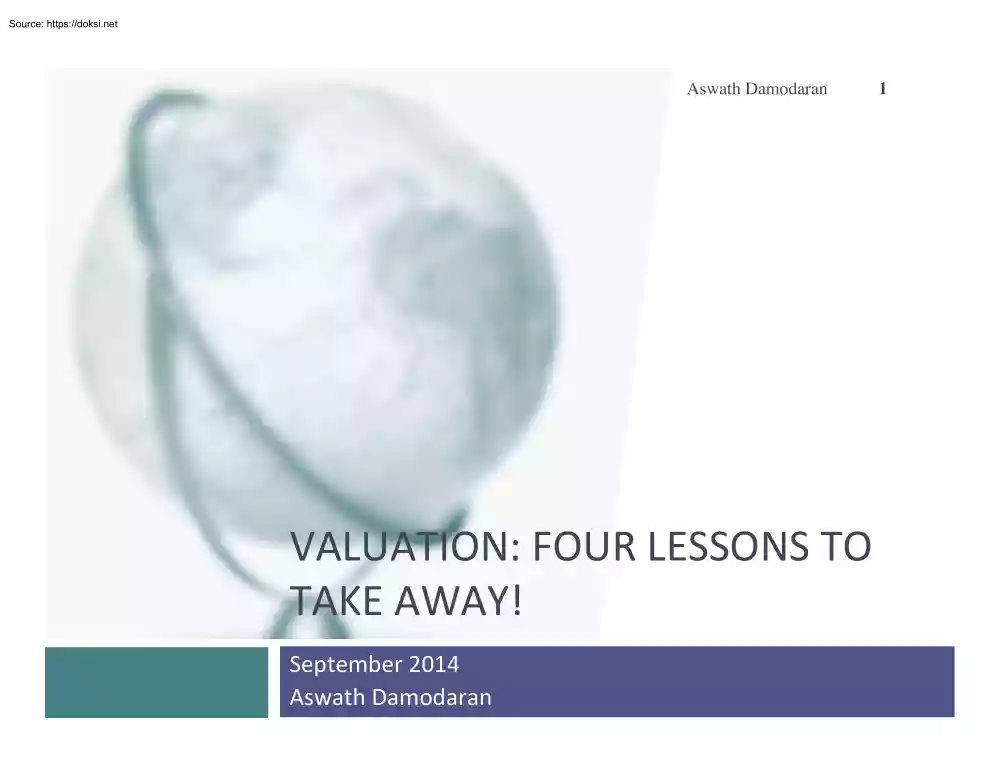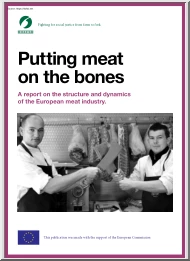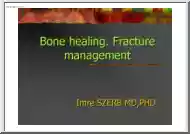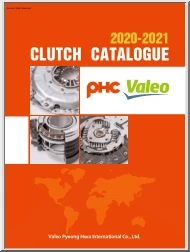Datasheet
Year, pagecount:2014, 26 page(s)
Language:English
Downloads:1
Uploaded:June 26, 2023
Size:6 MB
Institution:
[NYU-STERN] New York University | Stern School of Business
Comments:
Attachment:-
Download in PDF:Please log in!
Comments
No comments yet. You can be the first!
Content extract
Aswath Damodaran 1 VALUATION: FOUR LESSONS TO TAKE AWAY! September 2014 Aswath Damodaran 1. Don’t mistake accounting for finance Valued based upon motive for investment – some marked to market, some recorded at cost and some at quasi-cost Assets are recorded at original cost, adjusted for depreciation. The Balance Sheet Assets Liabilities Fixed Assets Current Liabilties Current Assets Debt Debt obligations of firm Investments in securities & assets of other firms Financial Investments Other Liabilities Other long-term obligations Assets which are not physical, like patents & trademarks Intangible Assets Equity Equity investment in firm Long Lived Real Assets Short-lived Assets True intangible assets like brand name, patents and customer did not show up. The only intangible asset of any magnitude (goodwill) is a plug variable that is of consequence only if you do an acquisition. Short-term liabilities of
the firm Equity reflects original capital invested and historical retained earnings. 2 The financial balance sheet Recorded at intrinsic value (based upon cash flows and risk), not at original cost Assets Existing Investments Generate cashflows today Includes long lived (fixed) and short-lived(working capital) assets Expected Value that will be created by future investments Liabilities Assets in Place Debt Growth Assets Equity Value will depend upon magnitude of growth investments and excess returns on these investments Fixed Claim on cash flows Little or No role in management Fixed Maturity Tax Deductible Residual Claim on cash flows Significant Role in management Perpetual Lives Intrinsic value of equity, reflecting intrinsic value of assets, net of true value of debt outstanding. 3 2. Don’t mistake modeling for valuaNon 4 What are the cashflows from existing assets? - Equity: Cashflows after debt payments - Firm: Cashflows before
debt payments Aswath Damodaran What is the value added by growth assets? Equity: Growth in equity earnings/ cashflows Firm: Growth in operating earnings/ cashflows How risky are the cash flows from both existing assets and growth assets? Equity: Risk in equity in the company Firm: Risk in the firm’s operations When will the firm become a mature firm, and what are the potential roadblocks? 4 The Set Up The Valuation Intermediary - Can talk both languages - Connect narratives to numbers - Bring discipline to both sides The Numbers People - Excel Ninjas - Masters of Modeling - Accounting Taskmasters The Stories People - Spinners of wondrous tales - Creative geniuses 5 Dueling PerspecNves ¨ ¨ Numbers people believe that valuaNon should be about numbers and that narraNves/stories are distracNons that bring in irraNonaliNes into invesNng. NarraNves
people believe that valuaNon and invesNng is really about great stories and that it is the height of hubris to try to esNmate numbers, when you face uncertainty. 6 LeT Brain and Right Brain 7 DCF as a tool for intrinsic valuaNon 8 Value of growth The future cash flows will reflect expectations of how quickly earnings will grow in the future (as a positive) and how much the company will have to reinvest to generate that growth (as a negative). The net effect will determine the value of growth Expected Cash Flow in year t = E(CF) = Expected Earnings in year t - Reinvestment needed for growth Cash flows from existing assets The base earnings will reflect the earnings power of the existing assets of the firm, net of taxes and any reinvestment needed to sustain the base earnings. Steady state The value of
growth comes from the capacity to generate excess returns. The length of your growth period comes from the strength & sustainability of your competitive advantages. Risk in the Cash flows The risk in the investment is captured in the discount rate as a beta in the cost of equity and the default spread in the cost of debt. Aswath Damodaran 8 Intrinsic value is simple: We choose to make it complex 9 For cash flow genera.ng assets, the intrinsic value will be a func.on of the magnitude of the expected cash flows on the asset over its life.me and the uncertainty about receiving those cash flows. 1. The IT Proposi.on: If “it” does not affect the cash flows or alter risk (thus changing discount rates), “it”
cannot affect value. 2. The DUH Proposi.on: For an asset to have value, the expected cash flows have to be posiNve some Nme over the life of the asset. 3. The DON’T FREAK OUT Proposi.on: Assets that generate cash flows early in their life will be worth more than assets that generate cash flows later; the la er may however have greater growth and higher cash flows to compensate. Aswath Damodaran 9 If your job is assessing value, here are your challenges 10 Value of Growth Companys history Look at past growth in revenues & earnings and how much the company has had to invest to generate this growth. Competitors Look at the growth, profitability &
reinvestment at competitors & determine your competitive advantages Cash flows from existing assets Based on the current financial statements of the company, make assessments of earnings and cash flows from existing assets. Market potential Make a judgment on the size, growth potential & profitablity of the overall market served by the company. Steady state Look at the largest and most mature companies in your peer group to make a judgment on when stablity will come to your company & what it will look like. Risk in the Cash Flows Past earnings Look at the variability of past earnings and the sources of the variability. Aswath Damodaran Past market prices If your company has been traded historically, get a measure of the variability in stock prices Peer group Look at the costs of funding faced by peer group companies, similar to yours. 10 Current Cashflow to Firm EBIT(1-t)= 5344 (1-.35)= 3474 - Nt CpX= 350 - Chg WC 691 = FCFF 2433 Reinvestment Rate = 1041/3474
=29.97% Return on capital = 25.19% 3M: A Pre-crisis valuation Reinvestment Rate 30% Expected Growth in EBIT (1-t) .30*.25=075 7.5% Value/Share $ 83.55 Year EBIT (1-t) - Reinvestment = FCFF 1 $3,734 $1,120 $2,614 3 $4,279 $1,312 $2,967 Cost of Debt (3.72%+75%)(1-35) = 2.91% + Beta 1.15 Unlevered Beta for Sectors: 1.09 11 2 $4,014 $1,204 $2,810 4 $4,485 $1,435 $3,049 5 $4,619 $1,540 , $3,079 Term Yr $4,758 $2,113 $2,645 Cost of capital = 8.32% (092) + 291% (008) = 788% Cost of Equity 8.32% Riskfree Rate: Riskfree rate = 3.72% Stable Growth g = 3%; Beta = 1.10; Debt Ratio= 20%; Tax rate=35% Cost of capital = 6.76% ROC= 6.76%; Reinvestment Rate=3/6.76=44% Terminal Value5= 2645/(.0676-03) = 70,409 First 5 years Op. Assets 60607 + Cash: 3253 - Debt 4920 =Equity 58400 Return on Capital 25% Aswath Damodaran Weights E = 92% D = 8% X On September 12, 2008, 3M was trading at $70/share Risk Premium 4% D/E=8.8% ‹#› Correlation = 0.70 Correlations across
assumptions make bad outcomes more likely to occur together, low revenue growth -> low margin -> high cost of capital Pre-tax Operating Margin Uniformly distributed, min=15%, max=35% Revenue growth (next 5 years) Normally distributed, with avg=5%,sd=2.5%) Cost of capital Triangular distribution, min=10.29%, max =11.29% Percentiles: 0% 10% 20% 30% 40% 50% 60% 70% 80% 90% 100% Forecast values $346.90 $448.34 $483.99 $517.91 $552.20 $588.45 $625.46 $665.16 $711.47 $771.57 $1,182.70 Statistics: Trials Base Case Mean Median Minimum Maximum Forecast values 100,000 $588.25 $600.74 $588.45 $346.90 $1,182.70 So, how about a young start-‐up company? Figure 3: Estimation Issues - Young and Start-up Companies Making judgments on revenues/ profits difficult because you cannot draw on history. If you have no product/service, it is difficult to gauge market potential or profitability. The companys entire value lies in future growth but you have little
to base your estimate on. Cash flows from existing What is the value added by growth assets non-existent or assets? negative. What are the cashflows from existing assets? How risky are the cash flows from both Different claims on existing assets and growth assets? cash flows can affect value of Limited historical data on earnings, equity at each and no market prices for securities stage. makes it difficult to assess risk. What is the value of equity in the firm? When will the firm become a mature fiirm, and what are the potential roadblocks? Will the firm make it through the gauntlet of market demand and competition? Even if it does, assessing when it will become mature is difficult because there is so little to go on. 13 Twi er: Sedng the table in October 2013 14 Twitter: Priming the Pump for Valuation 1. Make small revenues into big revenues 2. Make losses into profits My estimate for Twitter: Operating margin of 25% in year 10 3. Reinvest
for growth My estimate for 2023: Overall online advertising market will be close to $200 billion and Twitter will have about 5.7% ($115 billion) Aswath Damodaran My estimate for Twitter: Sales/Capital will be 1.50 for next 10 years SweaNng the small stuff: Risk and Required Return Risk in the discount rate My estimate for Twitter Cost of Capital: US -‐ Nov ‘13 Cost of capital = 11.12% (981) + 516% (019) = 1101% 2,500. Cost of Equity 11.12% Cost of Debt (2.5%+55%)(1-40) = 5.16% Weights E = 98.11% D = 189% 2,000. 1,500. Riskfree Rate: Riskfree rate = 2.5% + Beta 1.40 90% advertising (1.44) + 10% info svcs (1.05) Risk Premium 6.15% X 75% from US(5.75%) + 25% from rest of world (7.23%) 1,000. 500. 0. D/E=1.71% Survival Risk 0% 100% Probability that the firm will not make it as a going concern Certain to make it as going concern My assumption for Twitter Certain to
fail 16 Starting numbers Trailing%12% Last%10K month Revenues $316.93 $53446 Operating income :$77.06 :$13491 Adjusted Operating Income $7.67 Invested Capital $955.00 Adjusted Operatng Margin 1.44% Sales/ Invested Capital 0.56 Interest expenses $2.49 $5.30 Operating assets + Cash + IPO Proceeds - Debt Value of equity - Options Value in stock / # of shares Value/share $9,705 321 1295 214 11,106 713 10,394 582.46 $17.84 Twitter Pre-IPO Valuation: October 27, 2013 Revenue growth of 51.5% a year for 5 years, tapering down to 2.5% in year 10 Pre-tax operating margin increases to 25% over the next 10 years Stable Growth g = 2.5%; Beta = 100; Cost of capital = 8% ROC= 12%; Reinvestment Rate=2.5%/12% = 2083% Sales to capital ratio of 1.50 for incremental sales Terminal Value10= 1466/(.08-025) = $26,657 Revenues Operating Income Operating Income after tax - Reinvestment FCFF 1 $ 810 $ 31 $ 31 $ 183 $(153) 2 $1,227 $ 75 $ 75 $ 278 $ (203) 3 $1,858 $ 158 $ 158 $ 421 $ (263) 4
$2,816 $ 306 $ 294 $ 638 $ (344) 5 $4,266 $ 564 $ 395 $ 967 $ (572) 6 $6,044 $ 941 $ 649 $1,186 $ (537) 7 $7,973 $1,430 $ 969 $1,285 $ (316) 8 $9,734 $1,975 $1,317 $1,175 $ 143 9 $10,932 $ 2,475 $ 1,624 $ 798 $ 826 Cost of capital = 11.12% (981) + 516% (019) = 1101% Cost of Equity 11.12% Riskfree Rate: Riskfree rate = 2.5% Cost of Debt (2.5%+55%)(1-40) = 5.16% + Beta 1.40 90% advertising (1.44) + 10% info svcs (1.05) Weights E = 98.1% D = 19% Risk Premium 6.15% X 75% from US(5.75%) + 25% from rest of world (7.23%) D/E=1.71% 10 $11,205 $ 2,801 $ 1,807 $ 182 $ 1,625 Terminal year (11) EBIT (1-t) $ 1,852 - Reinvestment $ 386 FCFF $ 1,466 Cost of capital decreases to 8% from years 6-10 3. Don’t mistake price for value! 18 Drivers of intrinsic value - Cashflows from existing assets - Growth in cash flows - Quality of Growth Accounting Estimates INTRINSIC VALUE Valuation Estimates Aswath Damodaran Value Drivers of price - Market moods
& momentum - Surface stories about fundamentals THE GAP Is there one? If so, will it close? If it will close, what will cause it to close? Price PRICE 18 Test 1: Are you pricing or valuing? 19 Aswath Damodaran 19 Test 2: Are you pricing or valuing? 20 Aswath Damodaran 20 Test 3: Are you pricing or valuing? 21 EBITDA -‐ DepreciaNon EBIT -‐ Taxes EBIT (1-‐t) + DepreciaNon -‐ Cap Ex -‐ Chg in WC FCFF Terminal Value Cost of capital 1 $100.00 $20.00 $80.00 $24.00 $56.00 $20.00 $50.00 $10.00 $16.00 8.25% 2 $120.00 $24.00 $96.00 $28.80 $67.20 $24.00 $60.00 $12.00 $19.20 8.25% 3 $144.00 $28.80
$115.20 $34.56 $80.64 $28.80 $72.00 $14.40 $23.04 8.25% 4 $172.80 $34.56 $138.24 $41.47 $96.77 $34.56 $86.40 $17.28 $27.65 8.25% 5 $207.36 $41.47 $165.89 $49.77 $116.12 $41.47 $103.68 $20.74 $33.18 $1,658.88 8.25% Present Value $14.78 $16.38 $18.16 $20.14 $1,138.35 Value of operaNng assets today + Cash -‐ Debt Value of equity Aswath Damodaran $1,207.81 $125.00 $200.00 $1,132.81 21 Pricing Twi er: Start with the “comparables” 22 Number of users Enterprise Company Market Cap value Revenues EBITDA Net Income (millions) EV/User EV/Revenue EV/EBITDA Facebook $173,540.00
$160,09000 $7,87000 $3,93000 $1,49000 1230.00 $130.15 20.34 4074 Linkedin $23,530.00 $19,98000 $1,53000 $182.00 $27.00 277.00 $72.13 13.06 10978 Pandora $7,320.00 $7,15000 $655.00 -‐$18.00 -‐$29.00 73.40 $97.41 10.92 NA Groupon $6,690.00 $5,88000 $2,44000 $125.00 -‐$95.00 43.00 $136.74 2.41 4704 Neplix $25,900.00 $25,38000 $4,37000 $277.00 $112.00 44.00 $576.82 5.81 9162 Yelp $6,200.00 $5,79000 $233.00 $2.40 -‐$10.00 120.00 $48.25 24.85 241250 Open Table $1,720.00 $1,50000 $190.00 $63.00 $33.00 14.00 $107.14 7.89 2381 Zynga $4,200.00 $2,93000 $873.00 $74.00 -‐$37.00 27.00 $108.52 3.36
3959 Zillow $3,070.00 $2,86000 $197.00 -‐$13.00 -‐$12.45 34.50 $82.90 14.52 NA Trulia $1,140.00 $1,12000 $144.00 -‐$6.00 -‐$18.00 54.40 $20.59 7.78 NA Tripadvisor $13,510.00 $12,86000 $945.00 $311.00 $205.00 260.00 $49.46 13.61 4135 Average $130.01 11.32 350.80 Median $97.41 10.92 44.20 Aswath Damodaran PE 116.47 871.48 NA NA 231.25 NA 52.12 NA NA NA 65.90 267.44 116.47 22 Read the tea leaves: See what the market cares about 23 Market Cap Market Cap Enterprise value Revenues EBITDA Net Income 1. Enterprise value 0.9998 1. Revenues 0.8933 0.8966 1. EBITDA 0.9709 0.9701 0.8869 1. Net Income 0.8978 0.8971
0.8466 0.9716 1. Number of users (millions) 0.9812 0.9789 0.8053 0.9354 0.8453 Aswath Damodaran Number of users (millions) 1. 23 4. Don’t mistake luck for skill! 24 Aswath Damodaran 24 But here is the big picture 25 Aswath Damodaran 25 5. And the final lesson Aswath Damodaran 26
the firm Equity reflects original capital invested and historical retained earnings. 2 The financial balance sheet Recorded at intrinsic value (based upon cash flows and risk), not at original cost Assets Existing Investments Generate cashflows today Includes long lived (fixed) and short-lived(working capital) assets Expected Value that will be created by future investments Liabilities Assets in Place Debt Growth Assets Equity Value will depend upon magnitude of growth investments and excess returns on these investments Fixed Claim on cash flows Little or No role in management Fixed Maturity Tax Deductible Residual Claim on cash flows Significant Role in management Perpetual Lives Intrinsic value of equity, reflecting intrinsic value of assets, net of true value of debt outstanding. 3 2. Don’t mistake modeling for valuaNon 4 What are the cashflows from existing assets? - Equity: Cashflows after debt payments - Firm: Cashflows before
debt payments Aswath Damodaran What is the value added by growth assets? Equity: Growth in equity earnings/ cashflows Firm: Growth in operating earnings/ cashflows How risky are the cash flows from both existing assets and growth assets? Equity: Risk in equity in the company Firm: Risk in the firm’s operations When will the firm become a mature firm, and what are the potential roadblocks? 4 The Set Up The Valuation Intermediary - Can talk both languages - Connect narratives to numbers - Bring discipline to both sides The Numbers People - Excel Ninjas - Masters of Modeling - Accounting Taskmasters The Stories People - Spinners of wondrous tales - Creative geniuses 5 Dueling PerspecNves ¨ ¨ Numbers people believe that valuaNon should be about numbers and that narraNves/stories are distracNons that bring in irraNonaliNes into invesNng. NarraNves
people believe that valuaNon and invesNng is really about great stories and that it is the height of hubris to try to esNmate numbers, when you face uncertainty. 6 LeT Brain and Right Brain 7 DCF as a tool for intrinsic valuaNon 8 Value of growth The future cash flows will reflect expectations of how quickly earnings will grow in the future (as a positive) and how much the company will have to reinvest to generate that growth (as a negative). The net effect will determine the value of growth Expected Cash Flow in year t = E(CF) = Expected Earnings in year t - Reinvestment needed for growth Cash flows from existing assets The base earnings will reflect the earnings power of the existing assets of the firm, net of taxes and any reinvestment needed to sustain the base earnings. Steady state The value of
growth comes from the capacity to generate excess returns. The length of your growth period comes from the strength & sustainability of your competitive advantages. Risk in the Cash flows The risk in the investment is captured in the discount rate as a beta in the cost of equity and the default spread in the cost of debt. Aswath Damodaran 8 Intrinsic value is simple: We choose to make it complex 9 For cash flow genera.ng assets, the intrinsic value will be a func.on of the magnitude of the expected cash flows on the asset over its life.me and the uncertainty about receiving those cash flows. 1. The IT Proposi.on: If “it” does not affect the cash flows or alter risk (thus changing discount rates), “it”
cannot affect value. 2. The DUH Proposi.on: For an asset to have value, the expected cash flows have to be posiNve some Nme over the life of the asset. 3. The DON’T FREAK OUT Proposi.on: Assets that generate cash flows early in their life will be worth more than assets that generate cash flows later; the la er may however have greater growth and higher cash flows to compensate. Aswath Damodaran 9 If your job is assessing value, here are your challenges 10 Value of Growth Companys history Look at past growth in revenues & earnings and how much the company has had to invest to generate this growth. Competitors Look at the growth, profitability &
reinvestment at competitors & determine your competitive advantages Cash flows from existing assets Based on the current financial statements of the company, make assessments of earnings and cash flows from existing assets. Market potential Make a judgment on the size, growth potential & profitablity of the overall market served by the company. Steady state Look at the largest and most mature companies in your peer group to make a judgment on when stablity will come to your company & what it will look like. Risk in the Cash Flows Past earnings Look at the variability of past earnings and the sources of the variability. Aswath Damodaran Past market prices If your company has been traded historically, get a measure of the variability in stock prices Peer group Look at the costs of funding faced by peer group companies, similar to yours. 10 Current Cashflow to Firm EBIT(1-t)= 5344 (1-.35)= 3474 - Nt CpX= 350 - Chg WC 691 = FCFF 2433 Reinvestment Rate = 1041/3474
=29.97% Return on capital = 25.19% 3M: A Pre-crisis valuation Reinvestment Rate 30% Expected Growth in EBIT (1-t) .30*.25=075 7.5% Value/Share $ 83.55 Year EBIT (1-t) - Reinvestment = FCFF 1 $3,734 $1,120 $2,614 3 $4,279 $1,312 $2,967 Cost of Debt (3.72%+75%)(1-35) = 2.91% + Beta 1.15 Unlevered Beta for Sectors: 1.09 11 2 $4,014 $1,204 $2,810 4 $4,485 $1,435 $3,049 5 $4,619 $1,540 , $3,079 Term Yr $4,758 $2,113 $2,645 Cost of capital = 8.32% (092) + 291% (008) = 788% Cost of Equity 8.32% Riskfree Rate: Riskfree rate = 3.72% Stable Growth g = 3%; Beta = 1.10; Debt Ratio= 20%; Tax rate=35% Cost of capital = 6.76% ROC= 6.76%; Reinvestment Rate=3/6.76=44% Terminal Value5= 2645/(.0676-03) = 70,409 First 5 years Op. Assets 60607 + Cash: 3253 - Debt 4920 =Equity 58400 Return on Capital 25% Aswath Damodaran Weights E = 92% D = 8% X On September 12, 2008, 3M was trading at $70/share Risk Premium 4% D/E=8.8% ‹#› Correlation = 0.70 Correlations across
assumptions make bad outcomes more likely to occur together, low revenue growth -> low margin -> high cost of capital Pre-tax Operating Margin Uniformly distributed, min=15%, max=35% Revenue growth (next 5 years) Normally distributed, with avg=5%,sd=2.5%) Cost of capital Triangular distribution, min=10.29%, max =11.29% Percentiles: 0% 10% 20% 30% 40% 50% 60% 70% 80% 90% 100% Forecast values $346.90 $448.34 $483.99 $517.91 $552.20 $588.45 $625.46 $665.16 $711.47 $771.57 $1,182.70 Statistics: Trials Base Case Mean Median Minimum Maximum Forecast values 100,000 $588.25 $600.74 $588.45 $346.90 $1,182.70 So, how about a young start-‐up company? Figure 3: Estimation Issues - Young and Start-up Companies Making judgments on revenues/ profits difficult because you cannot draw on history. If you have no product/service, it is difficult to gauge market potential or profitability. The companys entire value lies in future growth but you have little
to base your estimate on. Cash flows from existing What is the value added by growth assets non-existent or assets? negative. What are the cashflows from existing assets? How risky are the cash flows from both Different claims on existing assets and growth assets? cash flows can affect value of Limited historical data on earnings, equity at each and no market prices for securities stage. makes it difficult to assess risk. What is the value of equity in the firm? When will the firm become a mature fiirm, and what are the potential roadblocks? Will the firm make it through the gauntlet of market demand and competition? Even if it does, assessing when it will become mature is difficult because there is so little to go on. 13 Twi er: Sedng the table in October 2013 14 Twitter: Priming the Pump for Valuation 1. Make small revenues into big revenues 2. Make losses into profits My estimate for Twitter: Operating margin of 25% in year 10 3. Reinvest
for growth My estimate for 2023: Overall online advertising market will be close to $200 billion and Twitter will have about 5.7% ($115 billion) Aswath Damodaran My estimate for Twitter: Sales/Capital will be 1.50 for next 10 years SweaNng the small stuff: Risk and Required Return Risk in the discount rate My estimate for Twitter Cost of Capital: US -‐ Nov ‘13 Cost of capital = 11.12% (981) + 516% (019) = 1101% 2,500. Cost of Equity 11.12% Cost of Debt (2.5%+55%)(1-40) = 5.16% Weights E = 98.11% D = 189% 2,000. 1,500. Riskfree Rate: Riskfree rate = 2.5% + Beta 1.40 90% advertising (1.44) + 10% info svcs (1.05) Risk Premium 6.15% X 75% from US(5.75%) + 25% from rest of world (7.23%) 1,000. 500. 0. D/E=1.71% Survival Risk 0% 100% Probability that the firm will not make it as a going concern Certain to make it as going concern My assumption for Twitter Certain to
fail 16 Starting numbers Trailing%12% Last%10K month Revenues $316.93 $53446 Operating income :$77.06 :$13491 Adjusted Operating Income $7.67 Invested Capital $955.00 Adjusted Operatng Margin 1.44% Sales/ Invested Capital 0.56 Interest expenses $2.49 $5.30 Operating assets + Cash + IPO Proceeds - Debt Value of equity - Options Value in stock / # of shares Value/share $9,705 321 1295 214 11,106 713 10,394 582.46 $17.84 Twitter Pre-IPO Valuation: October 27, 2013 Revenue growth of 51.5% a year for 5 years, tapering down to 2.5% in year 10 Pre-tax operating margin increases to 25% over the next 10 years Stable Growth g = 2.5%; Beta = 100; Cost of capital = 8% ROC= 12%; Reinvestment Rate=2.5%/12% = 2083% Sales to capital ratio of 1.50 for incremental sales Terminal Value10= 1466/(.08-025) = $26,657 Revenues Operating Income Operating Income after tax - Reinvestment FCFF 1 $ 810 $ 31 $ 31 $ 183 $(153) 2 $1,227 $ 75 $ 75 $ 278 $ (203) 3 $1,858 $ 158 $ 158 $ 421 $ (263) 4
$2,816 $ 306 $ 294 $ 638 $ (344) 5 $4,266 $ 564 $ 395 $ 967 $ (572) 6 $6,044 $ 941 $ 649 $1,186 $ (537) 7 $7,973 $1,430 $ 969 $1,285 $ (316) 8 $9,734 $1,975 $1,317 $1,175 $ 143 9 $10,932 $ 2,475 $ 1,624 $ 798 $ 826 Cost of capital = 11.12% (981) + 516% (019) = 1101% Cost of Equity 11.12% Riskfree Rate: Riskfree rate = 2.5% Cost of Debt (2.5%+55%)(1-40) = 5.16% + Beta 1.40 90% advertising (1.44) + 10% info svcs (1.05) Weights E = 98.1% D = 19% Risk Premium 6.15% X 75% from US(5.75%) + 25% from rest of world (7.23%) D/E=1.71% 10 $11,205 $ 2,801 $ 1,807 $ 182 $ 1,625 Terminal year (11) EBIT (1-t) $ 1,852 - Reinvestment $ 386 FCFF $ 1,466 Cost of capital decreases to 8% from years 6-10 3. Don’t mistake price for value! 18 Drivers of intrinsic value - Cashflows from existing assets - Growth in cash flows - Quality of Growth Accounting Estimates INTRINSIC VALUE Valuation Estimates Aswath Damodaran Value Drivers of price - Market moods
& momentum - Surface stories about fundamentals THE GAP Is there one? If so, will it close? If it will close, what will cause it to close? Price PRICE 18 Test 1: Are you pricing or valuing? 19 Aswath Damodaran 19 Test 2: Are you pricing or valuing? 20 Aswath Damodaran 20 Test 3: Are you pricing or valuing? 21 EBITDA -‐ DepreciaNon EBIT -‐ Taxes EBIT (1-‐t) + DepreciaNon -‐ Cap Ex -‐ Chg in WC FCFF Terminal Value Cost of capital 1 $100.00 $20.00 $80.00 $24.00 $56.00 $20.00 $50.00 $10.00 $16.00 8.25% 2 $120.00 $24.00 $96.00 $28.80 $67.20 $24.00 $60.00 $12.00 $19.20 8.25% 3 $144.00 $28.80
$115.20 $34.56 $80.64 $28.80 $72.00 $14.40 $23.04 8.25% 4 $172.80 $34.56 $138.24 $41.47 $96.77 $34.56 $86.40 $17.28 $27.65 8.25% 5 $207.36 $41.47 $165.89 $49.77 $116.12 $41.47 $103.68 $20.74 $33.18 $1,658.88 8.25% Present Value $14.78 $16.38 $18.16 $20.14 $1,138.35 Value of operaNng assets today + Cash -‐ Debt Value of equity Aswath Damodaran $1,207.81 $125.00 $200.00 $1,132.81 21 Pricing Twi er: Start with the “comparables” 22 Number of users Enterprise Company Market Cap value Revenues EBITDA Net Income (millions) EV/User EV/Revenue EV/EBITDA Facebook $173,540.00
$160,09000 $7,87000 $3,93000 $1,49000 1230.00 $130.15 20.34 4074 Linkedin $23,530.00 $19,98000 $1,53000 $182.00 $27.00 277.00 $72.13 13.06 10978 Pandora $7,320.00 $7,15000 $655.00 -‐$18.00 -‐$29.00 73.40 $97.41 10.92 NA Groupon $6,690.00 $5,88000 $2,44000 $125.00 -‐$95.00 43.00 $136.74 2.41 4704 Neplix $25,900.00 $25,38000 $4,37000 $277.00 $112.00 44.00 $576.82 5.81 9162 Yelp $6,200.00 $5,79000 $233.00 $2.40 -‐$10.00 120.00 $48.25 24.85 241250 Open Table $1,720.00 $1,50000 $190.00 $63.00 $33.00 14.00 $107.14 7.89 2381 Zynga $4,200.00 $2,93000 $873.00 $74.00 -‐$37.00 27.00 $108.52 3.36
3959 Zillow $3,070.00 $2,86000 $197.00 -‐$13.00 -‐$12.45 34.50 $82.90 14.52 NA Trulia $1,140.00 $1,12000 $144.00 -‐$6.00 -‐$18.00 54.40 $20.59 7.78 NA Tripadvisor $13,510.00 $12,86000 $945.00 $311.00 $205.00 260.00 $49.46 13.61 4135 Average $130.01 11.32 350.80 Median $97.41 10.92 44.20 Aswath Damodaran PE 116.47 871.48 NA NA 231.25 NA 52.12 NA NA NA 65.90 267.44 116.47 22 Read the tea leaves: See what the market cares about 23 Market Cap Market Cap Enterprise value Revenues EBITDA Net Income 1. Enterprise value 0.9998 1. Revenues 0.8933 0.8966 1. EBITDA 0.9709 0.9701 0.8869 1. Net Income 0.8978 0.8971
0.8466 0.9716 1. Number of users (millions) 0.9812 0.9789 0.8053 0.9354 0.8453 Aswath Damodaran Number of users (millions) 1. 23 4. Don’t mistake luck for skill! 24 Aswath Damodaran 24 But here is the big picture 25 Aswath Damodaran 25 5. And the final lesson Aswath Damodaran 26





 When reading, most of us just let a story wash over us, getting lost in the world of the book rather than paying attention to the individual elements of the plot or writing. However, in English class, our teachers ask us to look at the mechanics of the writing.
When reading, most of us just let a story wash over us, getting lost in the world of the book rather than paying attention to the individual elements of the plot or writing. However, in English class, our teachers ask us to look at the mechanics of the writing.